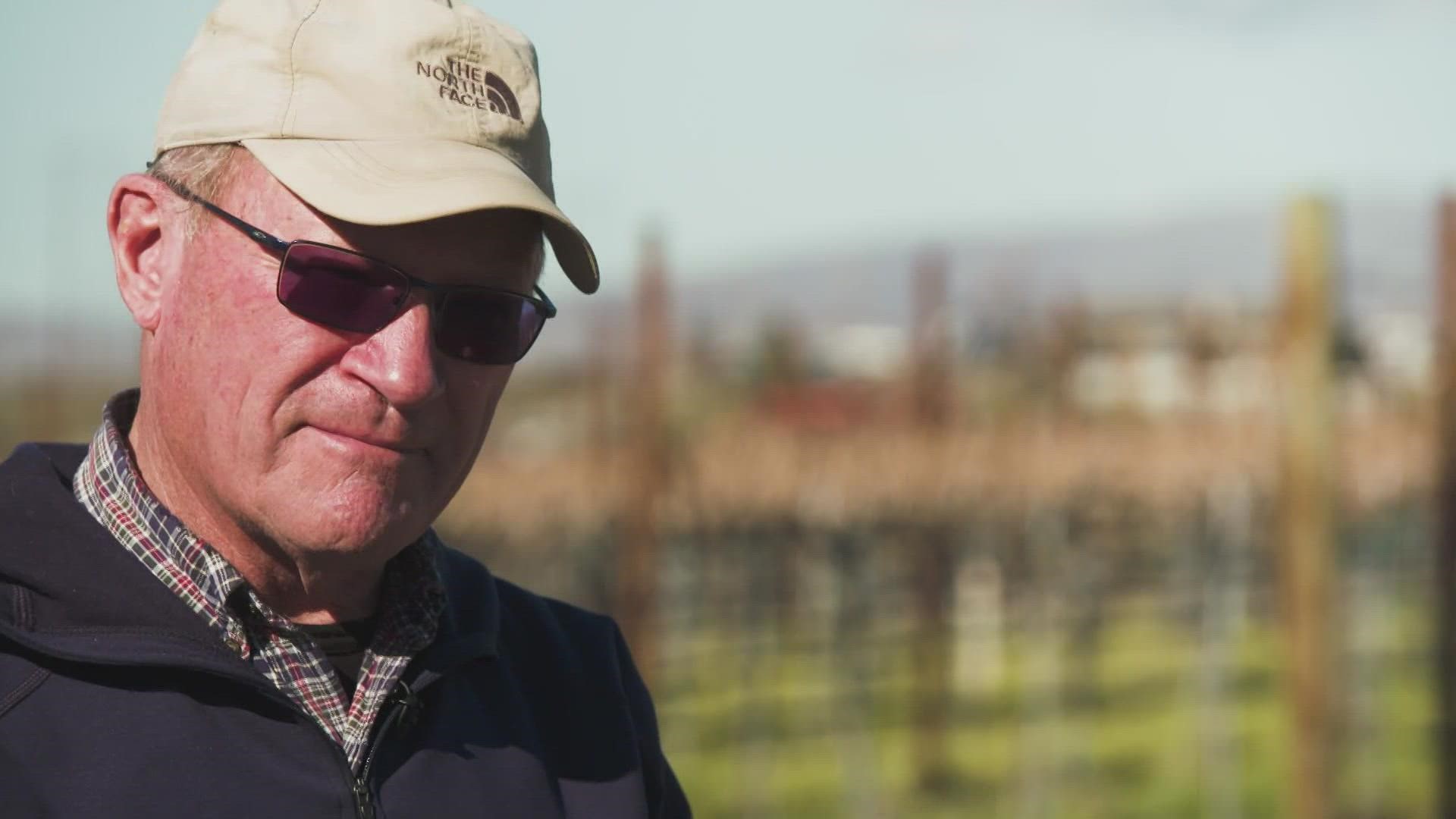YAKIMA COUNTY, Wash. — The vines of the wine industry spread across eastern Washington with more than 1,000 wineries producing more wine than any other state, except California.
Eighty-two of those wineries are in Yakima Valley, with vineyards covering 12,000 acres that are pumping out one-third of Washington's grapes.
But warming temperatures threaten to turn that culture to ash as climate change forces winegrowers to adjust their process.
"It's how we react to the weather and we try and react in a proactive way," said Dustin Tobin, vineyard manager at Precept Wine Brands.
The company, the largest privately-owned wine company in the Northwest, is spending February removing grapevines first planted in the early 1990s that no longer producer quality fruit.
"The late 80s and early 90s, that's around the time grape growing became popular in the region - and if these vines could talk," Tobin said.
The Pacific Northwest warmed by about 1.3 degrees between 1895 and 2011, according to the National Oceanic and Atmospheric Administration.
Tobin is from Yakima Valley and grew up in an agricultural family. Over the years he saw the shift from spray to drip irrigation for efficiency as water levels started decreasing. But with more extreme heat waves and droughts like the record-breaking highs seen last summer, Tobin is learning to work with an even more limited water supply.
"We just rotated the water every six hours. What got water on a Monday from Noon to 6 p.m., which is the hardest part of the day, got water on Tuesday from 6 p.m. to midnight," Tobin explained.
Wine grapes don't need a lot of water compared to apples and other fruit grown in the area, but winemaking is as much of an art as it is a science. Each grape grower reacts to climate change differently.
Dick Bouchey has been growing vine grapes in Yakima Valley for 41 years and says though he's not in denial about climate change, he also has no plans on moving Boushey Vineyards because of it.
"We have to adapt and manage our ground," said Bouchey who grows Cabernet Sauvignon, Merlot, and Cabernet Franc - wines that fair well in the heat.
Winemakers in the area are thinking of growing different varieties better suited for warmer temperatures and problem solving, he said.
"We're hiding the fruit with the canopy. We didn't use to do that. We used to expose it. Our row orientation is changing a little bit," Bouchey said of some of the changes he's made.
He worries even with water and heat management, warmer temperatures in the mountains mean even less water stored as snow impacting the reservoirs serving the Yakima Valley, like the ones seen along I-90.
"Nothing's been built since before World War II. And yet there's way more water demand. And at some point that's going to catch up with us," said Bouchey, whose vineyard sits on the Roza Irrigation District.
The district is a junior rights district, which means when there is not enough water to go around, they might not get any.
Though Tobin and Bouchey say their harvest was down 25% last year, about the same levels seen across the state, some experts say the biggest threat is still to come.
"That's wildfires," said winemaker and viticulturist Dr. Wade Wolf.
Washington saw the most fires in a decade with 1,191 DNR fires last year, according to the Washington State Department of Natural Resources.
"And they're getting closer to us," he said, adding the result is a smoke taint in the wine, which gives off an ashtray- or cigar-type character.
With the wine market pumping $8 billion into Washington's economy, smoke taint is a problem scientists are racing to solve. Last fall, Washington State University announced it was part of a $7.6 million grant to study smoke taint and its impact on wine, teaming up with scientists along the West Coast.
"There were fires in California, Oregon, and Washington going on simultaneously," said Dr. Wolfe.
But that research is new and it could take time for researchers to find long-term solutions.
In the meantime, the goal remains to adapt quickly to mitigate the damages caused by climate change while still producing a quality commercial crop.

